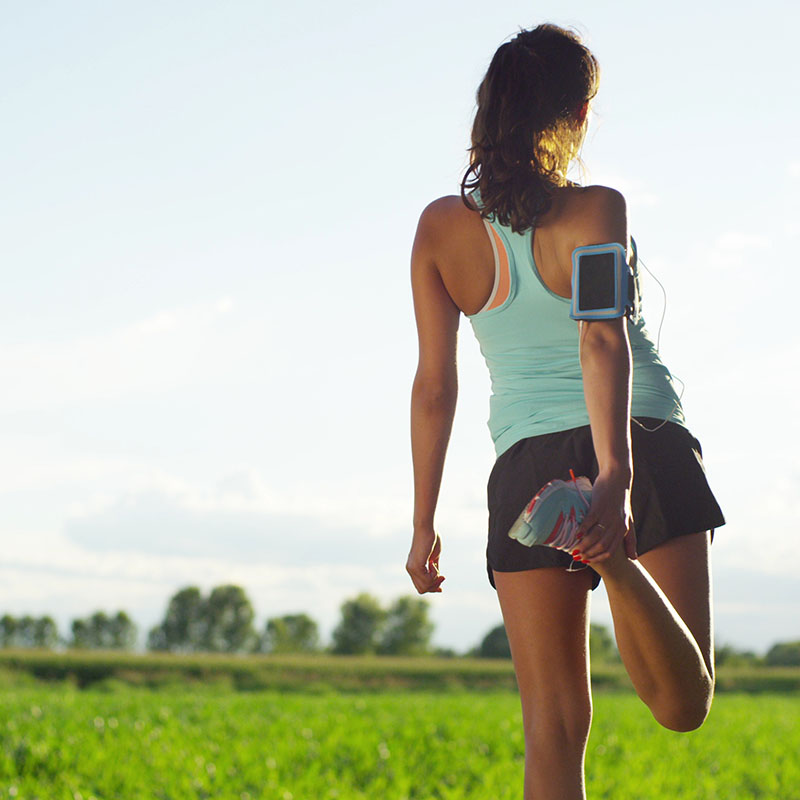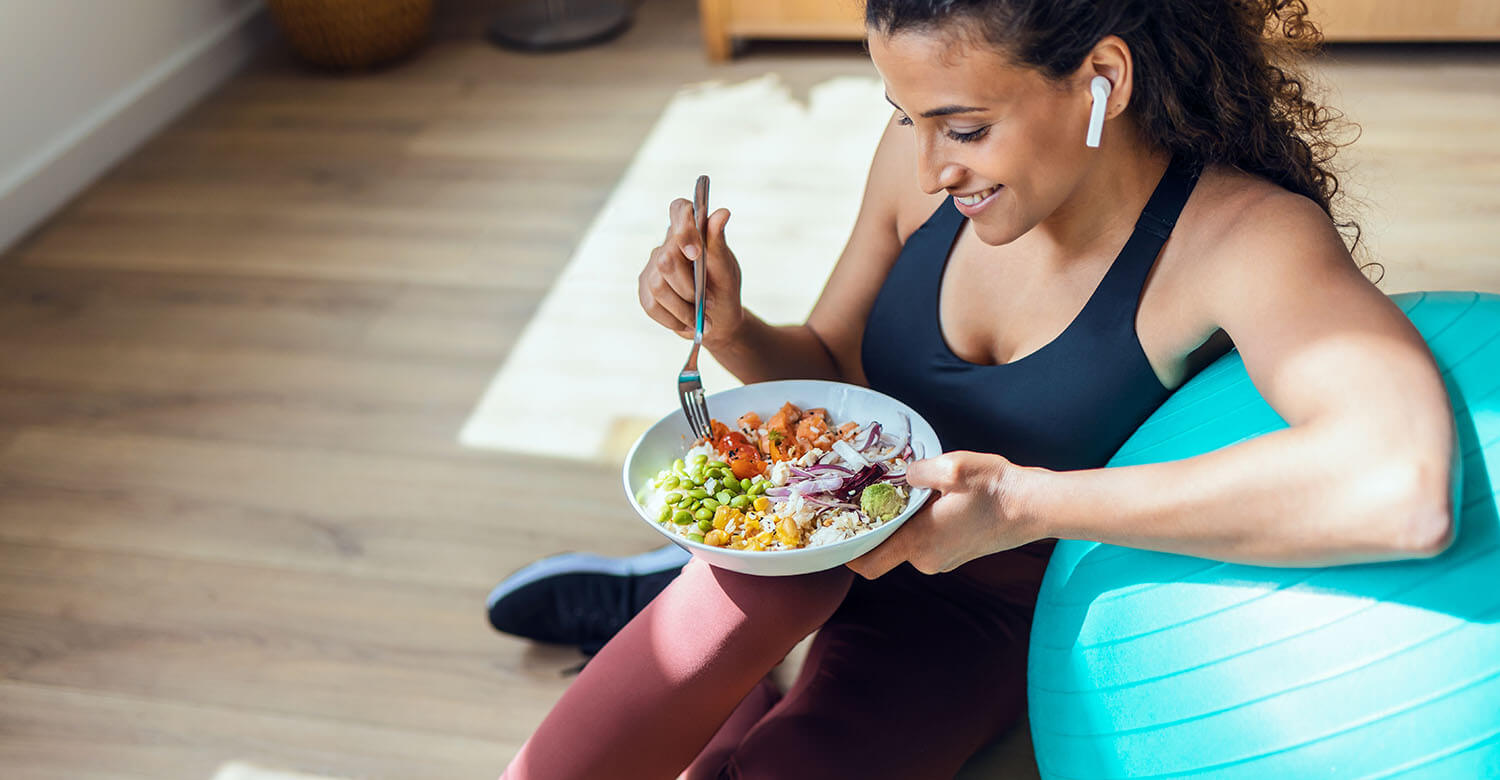
PULSES, an ally for SPORTS activity
As a highly nutritious food, pulses can help provide beneficial effects when part of a balanced diet, thanks to their strong supply of protein, vitamins and minerals for our bodies. This makes them a valuable food type in a variety of ways, meaning they can be usefully included in dietary habits in numerous cases: consumption of pulses leads to a reduction in high calorie foods (many of which lack any beneficial and/or essential nutritional value) in favour of less-energy intensive foods that are richer in useful substances for the body.1
Not many people know, however, that pulses represent an essential food type for athletes as well, because they help improve stamina for increased energy output.
So, let’s look more closely at some reasons why the metabolic and muscular support from pulses for sport activity should never be neglected, and the most useful time to benefit from their nutritional properties.
Pulses in an athlete’s diet
A staple of the Mediterranean diet, pulses are one of the must-have foods for an athlete, thanks to the ability of high protein foods to improve performance. But why should those who play sport opt for lentils, beans and chickpeas over meat, fish and eggs, i.e., those food types which we usually refer to when talking about protein?
An unusual all-rounder from a nutritional point of view, containing high quantities of iron, calcium and phosphorus, pulses are a crucial source of plant-based protein which, unlike animal protein, is easier to absorb and does not place pressure on our liver. An excellent ally for athletes, pulses help to sustain increased energy output in all types of physical activity but especially during aerobic or high-intensity exercise, such as a swimming competition or spinning lesson. Along with the invaluable plant-based protein content, the level of minerals and vitamins (especially B-group), and of magnesium and potassium, make them the perfect food both during injury recovery and before training.2
Eating pulses before working out
We have seen how lentils, chickpeas, beans and peas are really useful in helping to generate the energy levels needed for all sport activity. But is it better to eat pulses before or after working out?
Regarding this issue, note that complex glucides (also known as polysaccharides or complex carbohydrates, as they are greater in quantity) are at the top of the list for nutritional value. Pulses are one of the best sources of this element along with grains and their derivatives, tubers and potatoes. These are nutrients that are absorbed gradually, and their slow release of energy represents a real energy reserve in the body.3
Eating pulses before working out is, therefore, an excellent habit as it helps sustain the increased effort by saving glycogen energy reserves.4

Eating pulses after working out
The consumption of pulses rich in starch (complex carbohydrates) is useful not only before working out, but also after, due to the body’s need to replenish glycogen reserves in the bloodstream, which allows quicker energy level recovery.5 There are even clearer benefits when pasta made from pulses is added to or alternated with pasta made from wheat: the combined consumption of pulses and grains, aside from contributing to a healthy reduction in the consumption of meat, eggs, milk and derived products, can also mutually compensate the biological value of protein, essential for muscle recovery or hypertrophy in post-training/workout.6
While sports activity is essential for correct development of the body and maintaining optimal health, a balanced diet is the best way to satisfy energy and nutritional needs for those who play sports, at both amateur and professional levels. This need is offered a convincing solution through the new flexible diets imported from the United States and now also common in Italy, which tend to combine the nutritional health principles of plant-based food types with the benefits offered by the occasional consumption of animal-based foods (meat, fish, eggs, dairy products), without imposing all-out abstention.
In accordance with our ongoing aptitude to identify new and emerging food trends and transform them into an opportunity for modern and innovative food proposals, here at Pedon we are happy to embrace the principles behind the flexitarian diet which promotes the consumption of pulses by creating new types of products that respond to new lifestyle and consumption habits, the so-called hybrid approach.
For athletes who need healthy ‘fuel’ and have problems finding a “practical” solution for consuming plant-based foods before or after working out, we have created the range Legumes Made as Snack. This is a revolution in the way of perceiving and eating this food type as their nutritional value is not affected by the extrusion process. The full nutritional value is guaranteed (also because we keep them in their original form) thanks to the roasting process.
Available in a handy single-portion pack that is easy to carry anywhere for a healthy energy boost for those who enjoy working out thanks to the nutritional benefits guaranteed by the presence of minerals and proteins and zero added sugars, they are also available in a multi-portion format to share with your teammates or friends, possibly as an addition to salads or yoghurt after training. Oven-roasted and non-fried, these snacks are tasty, crunchy and light (less than 100 kcal per portion!) and come in a variety of flavours, subdivided in 3 categories. The Natural range with hip Edamame beans and world-renowned Chickpeas, Edamame beans, Pumpkin and Sunflower Seeds, the Flavourful range, that includes Rosemary Chickpeas and the Functional range, that includes Mediterranean-style Fava beans and Lentils with Tomato and Olives. A range that satisfies all tastes and allows rapid recovery from the increased effort needed for a swim in the pool or for a run in the park, thanks also to their invaluable combination of grains, dried fruit and vegetables.
Bibliography
- “Benefici dei legumi come pasto pre e post allenamento” (Benefits of pulses as a meal, before and after working out) – Riccardo Borgacci, Dietician and Personal Trainer, Source my-personaltrainer.it
- “Legumi e sport: conoscerli meglio per utilizzarli di più” (Pulses and sport: know them better to use them more often) – Sabrina Lucrezia Di Ceglie, Nutritional Biologist, Source www.zerocaloriebo.it
- “Carboidrati per chi fa sport: quali scegliere” (Carbohydrates for those who play sport: which to choose), Giulia Miglietti, Dietician, Source giuliamiglietti.it
- “Benefici dei legumi come pasto pre e post allenamento” (Benefits of pulses as a meal, before and after working out) – Riccardo Borgacci, Dietician and Personal Trainer, Source www.my-personaltrainer.it
- “Carboidrati per chi fa sport: quali scegliere” (Carbohydrates for those who play sport: which to choose) – Giulia Miglietti, Dietician, Source giuliamiglietti.it
- “Benefici dei legumi come pasto pre e post allenamento” (Benefits of pulses as a meal, before and after working out) – Riccardo Borgacci, Dietician and Personal Trainer, Source www.my-personaltrainer.it

 Torna al menu
Torna al menu

